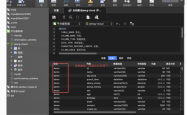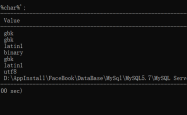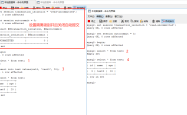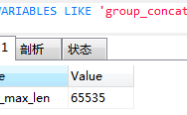MySQL 加锁控制并发的方法
目录
- 前言
- 一、乐观锁
- 添加version字段
- 二、悲观锁
前言
锁总体可以分为乐观锁和悲观锁,简单说,乐观锁用版本号控制,悲观锁用锁控制。
下面是待会要用来测试的数据
?| 1 2 3 4 5 6 7 8 9 10 11 12 | # 添加一个 user 表 create table `users` ( `id` int (11) not null auto_increment comment 'id' , ` name ` varchar (255) not null comment '姓名' , primary key (`id`) ) engine=innodb auto_increment=2 default charset=utf8; # 插入3条数据 insert into `users` (`id`, ` name `) values (1, '雪山飞猪' ), (2, 'chenqionghe' ), (3, 'cqh' ); |
查询结果如下:
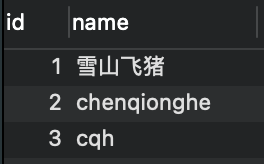
一、乐观锁
核心原理是增加一个version的字段来控制。
举个场景,我们希望并发更新单行记录的时候的时候,只有一个进程更新成功,如下
| 1 2 | update users set name = "雪山飞猪" where id=3 update users set name = "chenqionghe" where id=3 |
上面这两个sql最终都会更新成功,且以最后更新结果为主。
解决办法是添加一个version字段
添加version字段
?| 1 | alter table users add `version` int not null default '0' |
解决办法是添加一个version字段,每个更新时where条件都加上它,并且也更新它
?| 1 2 | update users set name = "雪山飞猪" ,version=version+1 where id=3 and version=0 update users set name = "chenqionghe" ,version=version+1 where id=3 and version=0 |
这次变成了只会更新成功一次,谁先抢到这条记录以谁为主,因为当前一个进程更新成功后版本号已经变化了,第二个进程找不到这条记录了。
这就是最简单的cas机制。
二、悲观锁
其实类似go语言里的mutex和rwmutex读锁
读锁
也叫共享锁或s锁,当给数据表加上共享锁的时候,表就变成了只读模式。
我们可以锁全表,也可以锁全表或部分行,如下
全表锁(lock table 表 read)
语法如下
?| 1 2 | lock table 表 read unlock table ; |
我们来测试一个,第一个进程执行
?| 1 | lock table users read ; |

第二个进程执行正常读
?| 1 | select * from users where id=1; |

可以正常查询。我们再来执行一下更新
?| 1 | update users set name = "chenqionghe" where id=1 |
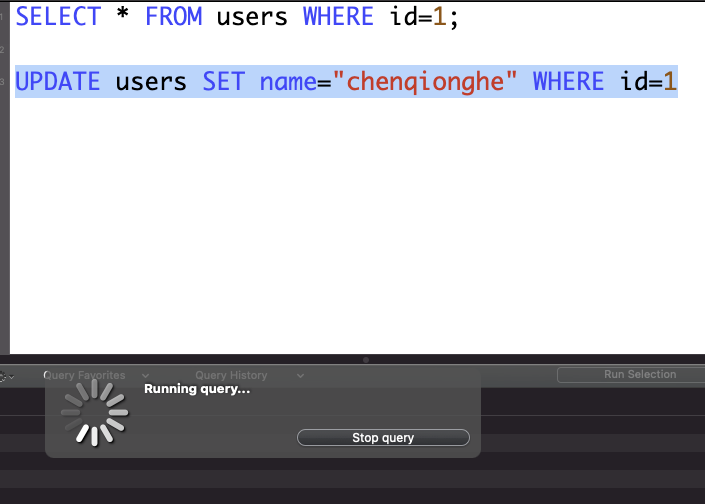
出现了等待。
我们给第一个进程解锁

再看第二个进程,已经更新成功
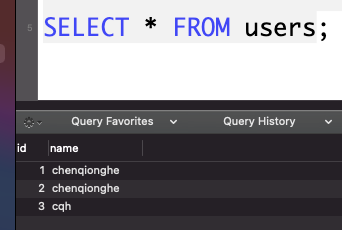
行锁(select ... lock in share mode)
?| 1 2 3 | begin ; select * from users where id in (1,2) lock in share mode commit ; |
必须配合事务使用,bein开始后,锁定的行,外部只能查询,不能更新
我们来测试一下,第一个进程执行
?| 1 2 | begin ; select * from users where id in (1,2) lock in share mode |
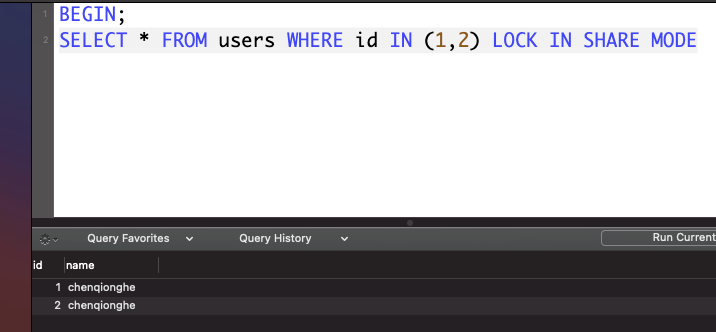
这里锁定了id为1和2的记录行。我们第二个进程执行更新
?| 1 | update users set name = "雪山飞猪" where id=1 |
又一次出现了等待。
好,这时候我们将第一个进程的事务提交
| 1 | commit ; |

第二个进程更新成功了,如下
写锁
也排他锁、独占锁,理解成读和写都不行了,语法如下
全表锁(lock table 表 write)
?| 1 | lock table users write; |
这时候已经锁定全表,我们再用另一个进程查询一下id为1的数据
?| 1 | select * from users where id=1 |
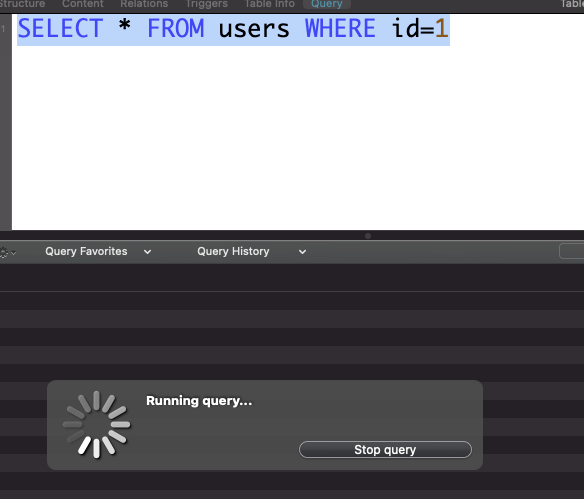
可以看到,查询已经发生了等待。
我们再将第一个进程解锁
| 1 | unlock table |

这时候,第二个进程立马查询成功
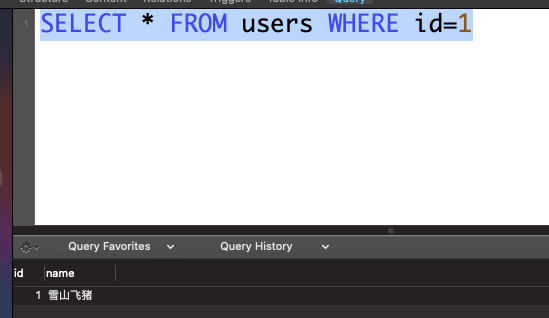
行锁(select ... for update)
当我们对数据进行更新的时候(insert、delete、update)的时候,数据库会自动使用排它锁,防止其他事务操作该数据
?| 1 2 3 | begin ; select * from users where id in (1,2) lock in share mode commit ; |
我们再来测试一下,第一个进程锁定id为1和2的记录
?| 1 2 | begin ; select * from users where id in (1,2) for update |
注意:这时候事务没提交
我们先用第二个进程来更新id为3的记录(未被锁定)
?| 1 | update users set name = "chenqionghe" where id=3 |

执行成功了。
我们再来更新一个id为1的记录
| 1 | update users set name = "chenqionghe" where id=1 |
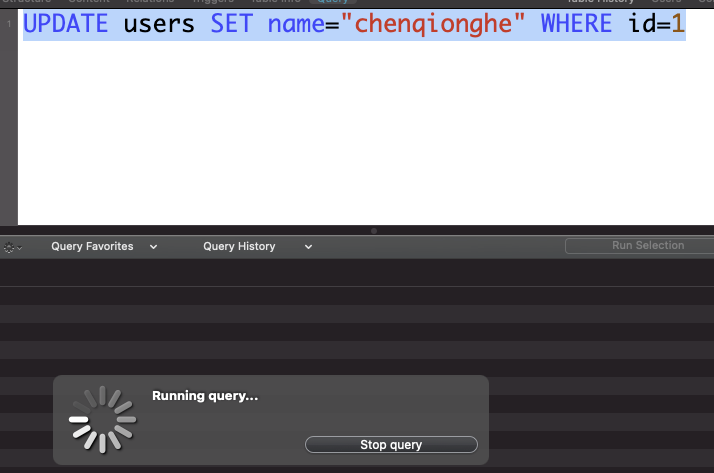
发生了等待,说明已经被锁定了。
好,我们提交第一个进程的事务
| 1 | commit ; |
再去看第二个进程,已经更新成功
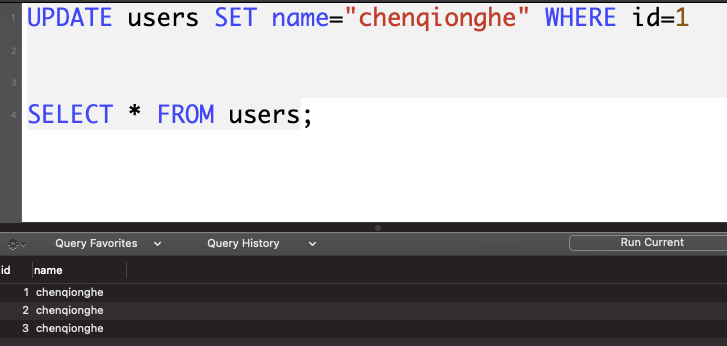
简单说乐观锁用version控制,悲观锁的表锁一般用不着,行的读锁用lock in share mode,写锁用fro update,就是这么简单!
以上就是mysql 加锁控制并发的方法的详细内容,更多关于mysql 加锁控制并发的资料请关注服务器之家其它相关文章!
原文链接:https://www.cnblogs.com/chenqionghe/p/14340333.html
1.本站遵循行业规范,任何转载的稿件都会明确标注作者和来源;2.本站的原创文章,请转载时务必注明文章作者和来源,不尊重原创的行为我们将追究责任;3.作者投稿可能会经我们编辑修改或补充。


